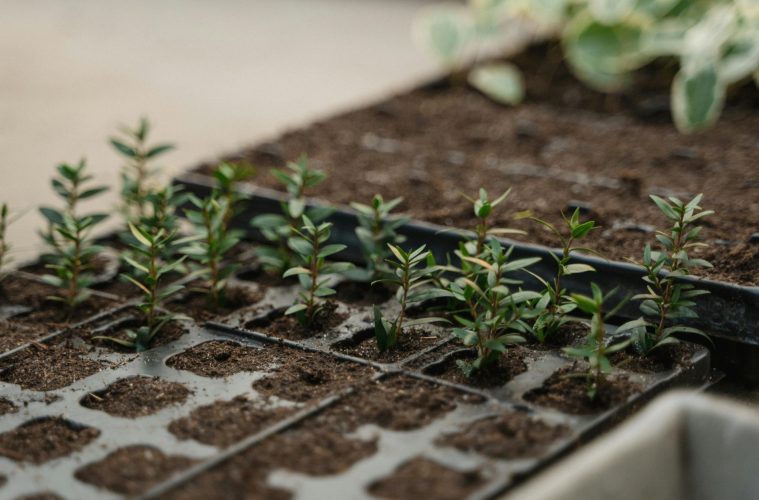If you’re starting seeds in trays or sowing directly into the ground, one thing is always true — the faster they germinate, the better. Rapid germination leads to stronger seedlings, fewer losses and a more predictable start to the season. While some seeds are quick to sprout with little help, others benefit from a bit of extra care. Understanding the right conditions can shave days off your wait and improve your success rate overall.
Soak seeds to jump-start the process
Moisture is the universal trigger for germination. For many seeds, especially those with tougher outer shells, a pre-soak can help mimic the natural hydration they would experience in early spring. Cold, dry winters followed by rain or melting snow are usually what tells seeds it’s time to grow. By soaking seeds in water before sowing, you replicate this and often speed things up.
However, it’s important not to overdo it. Some seeds become difficult to handle when wet, especially if they are very small. They can clump together, making it hard to sow them evenly. For larger seeds with hard coatings, a few hours in water is often all they need. Too much soaking can reduce oxygen availability, which slows germination rather than encouraging it.
Scarify tougher seeds for better absorption
Some seeds are naturally designed to resist early germination. They have hard coatings that would typically break down over time through frost, rainfall or being passed through an animal’s digestive system. If you’re sowing in controlled conditions, these seeds can take much longer to sprout unless you help them along.
Scarification is the process of gently scratching or nicking the seed coat to allow water inside. A rough surface, like sandpaper, can be used to scuff the outer layer, giving moisture a direct path to the embryo. This can make a remarkable difference in both the speed and consistency of germination for species known to have thick or protective coatings.
Use the right seed-starting mix
Seeds don’t need nutrient-rich soil to get going. In fact, traditional potting soil can be too heavy and dense for delicate seedlings. A good seed-starting mix should be fine-textured, lightweight and free-draining. This creates space for young roots to grow freely and helps prevent the fungal problems that thrive in overly moist, nutrient-rich environments.
Seed-starting mixes usually contain materials that retain moisture without holding excess water, which is ideal for preventing rot. Avoid composts with large chunks or added fertilisers — too much nutrition early on can damage or overwhelm young plants.
Know what your seeds need when it comes to light
Light is a key factor in germination, but its importance varies depending on the plant. Some seeds need direct exposure to light to trigger sprouting, while others require complete darkness. This detail is often overlooked but makes a noticeable difference.
Check whether your seeds prefer surface sowing or need to be lightly covered with soil. Getting this wrong can result in poor germination, even if you’ve done everything else correctly. If you’re unsure, err on the side of caution and sow in a way that allows for both airflow and gentle light exposure.
Control the temperature for faster growth
Just like light, temperature plays a crucial role in germination speed. Most seeds germinate best in soil temperatures between 20°C and 30°C. If the ground is too cold, even moisture and light won’t get things moving. Starting seeds indoors gives you more control, allowing you to maintain a consistent, warm environment.
Heat-loving vegetables and annuals in particular benefit from indoor starts. If you’re sowing outside, aim to wait until the soil has warmed sufficiently, even if air temperatures feel comfortable. Seeds that are too cold will simply sit dormant or rot.
Decide where to sow based on how plants grow
Not every plant enjoys being transplanted. Some species respond well to being started indoors and then moved, while others perform better when sown directly where they will grow. For faster germination and better long-term results, consider the final destination of the plant before you start.
Those with delicate root systems often dislike being disturbed, so direct sowing is the safer choice. Others, especially those that take longer to mature, can benefit from an early indoor start, giving them a head start before being planted out.
Keep conditions moist but never waterlogged
Moisture is essential to germination, but too much water can be just as harmful as too little. Seeds need access to both moisture and oxygen. When the soil is constantly soggy, oxygen levels drop and the risk of fungal disease increases. This can kill young seedlings quickly, often before they even have a chance to sprout.
Choose containers or seed trays with proper drainage and monitor soil moisture daily. The surface should feel damp to the touch but not wet. A clear plastic cover can help retain humidity without overwatering, especially if you are starting seeds indoors.
Faster germination isn’t just about speed — it’s about giving seeds the best possible start. With a little preparation, the right materials and careful attention to conditions, you can boost your germination rates and shorten the wait from sowing to sprouting. Whether you’re growing herbs on a windowsill or planning a full vegetable patch, starting strong makes all the difference.
ALSO SEE:
Featured Image: Pexels

